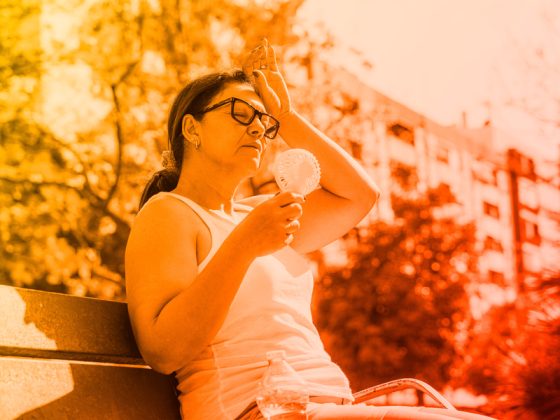The Singapore University of Technology and Design (SUTD) announces a new and inclusive Sustainability Plan (SSP) that will leverage on technology and design thinking to build a more sustainable and happier world by design. With the university’s mission ‘A Better World by Design‘ as its foundation, the SSP will use participation by all members of the SUTD community as the yardstick in its approach to measure sustainability, as part of efforts to build a broad-based culture of sustainability.
The SSP builds on SUTD’s international leadership in design and engineering innovation by framing three key commitments as leverage points for creating new sustainable technologies:
- To transform SUTD campus into a green experimental ground for test-bedding of new sustainable technologies (OASIS – Open Arena for Sustainability Innovation and Solutions)
- To launch a new research initiative on Circular Economy to generate sustainable products and software solutions
- To provide hands-on sustainability learning/education for students
More details about this can be found in Annex A.
A new design centre, SUTD DesignZ, will be set up to lead the University’s sustainability efforts (more information on DesignZ can be found in Annex B). The centre’s Director, Professor Tai Lee Siang and SUTD’s Chief Sustainability Officer Professor Erwin Viray will spearhead the efforts. Senior management, student leaders, alumni, faculty and staff will be involved to influence key decisions and drive the sustainability agenda at the university level.
SUTD President, Professor Chong Tow Chong said: “To achieve holistic sustainability, SUTD believes in the use of design defined as ‘Design, when powered by technology, is the informed, intentional, intelligent and imaginative force that will drive innovations to improve lives, grow economies and sustain our world.’ This is why we are launching our next generation DesignZ Centre to lead our sustainability efforts to transform SUTD into a living lab for new sustainable technologies, in partnership with industry and community, to build a more sustainable and happier world by design.”
Collaborations with Coalition Partners
Smart Low-Carbon District
SUTD will work with SingHealth in a first-of-its-kind ground-up effort to achieve a smart low-carbon district.
A smart low-carbon district refers to an area of clear geographical boundary or feature that achieves low energy consumption through energy resilience and behavioural change through smart technologies. Such initiatives include lowering the carbon footprint of buildings through the adoption of smart green technologies, transformation of business processes that culminate in influencing behavioural change of the community.
SUTD aims to take its sustainability plan to support industry and community to achieve circularity. As the first of such efforts, SUTD and SingHealth will seek to collaborate on three fronts to achieve a smart low-carbon district, and this also forms part of the long-term plans of SingHealth’s campuses in the east of Singapore under its regional hospital network. More details of the efforts can be found in Annex C.
“As we shape the future of healthcare, sustainability is an important part of the conversation. This includes building efficient technologies and infrastructure that are sustainable in the long run, and having smart healthcare campuses that will optimise resources and improve the healthcare experience for our patients. We are delighted to join SUTD on this journey of sustainability, and look forward to actively incorporate programmes, designs and innovations as we enhance care for our patients and the community by co-creating a healthier and more sustainable environment,” said Prof Lee Chien Earn, Deputy Group CEO (Regional Health System), and Chairman, Planning Committee, Eastern General and Community Hospitals.
Ground-up greening of communities
The creation of ground-up low-carbon districts is not limited to the hardware but also the “heart ware” of the people. SUTD will be working closely with the North West Community Development Council (CDC) to explore various projects that can help residents advance towards a greener culture and bring about behavioural changes in the community. For more details, please refer to Annex D.
Alex Yam, mayor of North West CDC, said: “Sustainability is deeply rooted in North West District’s DNA. Through North West CDC’s network and resources, we are keen to collaborate with SUTD in providing an out-of-classroom experience for students to identify opportunities in the community and build connections with more residents through green initiatives of their own.”
Private sector to lead sustainability efforts
SUTD will also enter into collaboration efforts with green developer City Development Limited (CDL) to jointly explore cutting edge green building products and innovations to achieve low-carbon and net zero outcomes. Details of the projects can be found in Annex E.
Ms Esther An, CDL Chief Sustainability Officer, said, “In the global race to zero, digitalisation and technology are vital in addressing the climate crisis. Partnerships across various industries and sectors can amplify action and deepen impact, as well as bring us closer towards national and global goals. Since 2017, innovation has been identified by our internal and external stakeholders as the top ESG issue that underpins our sustainability strategy. CDL is pleased to collaborate with SUTD on new and innovative solutions that further elevates the performance of our existing projects, and as a result, advances our vision of developing sustainable cities and communities.”










